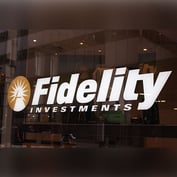When I speak to my former colleagues on Wall Street, I am amazed at the shift in their attitudes toward their businesses since April 2000, when the technology sector corrected after several years of robust growth. But beyond the drop in the overall value of the market, April 2000 is significant because it marked the beginning of a mass awakening to the concept of balancing risk with return.
In the heyday of the bull market in the United States, we were all excited to be involved with the financial services industry. Whether financial companies derived their revenues from management fees or commissions, the top line numbers grew rapidly despite price competition from technology-based upstarts. We all looked like superstars as most of the positions gained in the accounts we managed. Yet, in retrospect, we had our fair share of troubles the whole time.
The words were rarely spoken out loud, but there was always the lingering sense that we could not clearly explain why valuations were as high as they were on many of the companies in which we were invested. Even the boldest investors, if they’d learned anything from Wall Street’s legacy, harbored some inexplicable fear that the macro events that could slow capital spending might ultimately undo all of our newfound gains. But that fear was easily pushed aside by the increasingly aggressive expectations of our clients. Of course, we could have always decided to take profits and pull out of the market, but many who did ended up leaving so much on the table as the liquidated stocks kept rolling on that the clients were naturally dismayed.
In this environment, investment managers continued to build bigger portfolios on foundations of sand, perpetuating a climate of sky-high valuations, slim deal allocations, and irrational exuberance. As long as money was being made, customers didn’t care about other facets of the service they were receiving. Research became a corrupted commodity. Execution was hard to define as good or bad. And commissions or fees were always too high, even in a market where long positions gained almost daily.
When profits were the most important part of the client relationship and most people were making money, investors could not, or would not, differentiate between superior service and good luck. Now, all that has changed–but it is a change for the better.
Why? In the aftermath of a 17-month-long weakening of the market, you now have a great opportunity to build your assets under management. After learning the hard way that there is much more to sound financial advice than a recommendation to ride the bubble, today’s investor will help drive a more efficient market. In this light, the rapid buildup and subsequent burst of the tech bubble could be perceived as the rise of the smart investor.
Fortunately, technology has kept pace with the growing desire of the smart investor to evaluate not only potential return but also the potential loss of an investment. Advisors who build their relationships on a bedrock of smart, prudent decision-making will find that these relationships last through both good times and bad. These advisors will benefit from the combination of a growth of powerful Web-based applications and a more sophisticated population of investors who have been tempered by a challenging market.








 October 01, 2001 at 08:00 PM
October 01, 2001 at 08:00 PM










